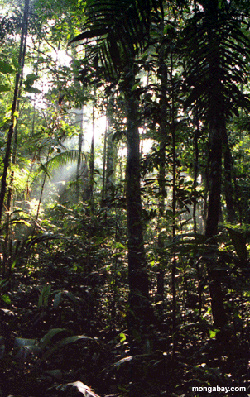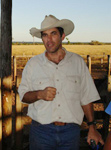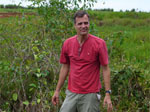Dutch bank arranges Amazon rainforest carbon-conservation deal
Dutch bank arranges carbon-conservation deal in the Amazon rainforest
mongabay.com
November 27, 2007
Dutch bank Rabobank will launch the first-ever carbon credits project in the Xingu region of the Brazilian Amazon, reports The Financial Times. Backers hope the concept could pave the way for future carbon finance initiatives in the Amazon rainforest.
Beginning next month, Rabobank will provide $83,000 to eight soy farms and cattle ranches in the Xingu region in Mato Grosso, the state where most deforestation is presently occurring in the Brazilian Amazon. The money will fund reforestation along waterways and encourage landowners to follow existing environmental regulations passed by the Brazilian government. The projects will be eligible for carbon credits which can then be sold at a rate of $2-15 per ton, depending on the project, to companies or individuals looking to offset their greenhouse gas emissions. Rabobank says it may use the credits to offset its own emissions.
 The Brazilian Amazon |
“The idea is to see how much impact the finance will have on different sizes of farm and where it is most effective,” Daniela Mariuzzo of Rabobank’s São Paulo office told The Financial Times.
If the pilot project is a success, it will likely be expanded to other areas. By some estimates, conserving the Amazon rainforest for carbon offsets and other ecosystem services could be a better use of land than clearing it for cattle pasture (break-even carbon price of $2-5 per ton of CO2), timber (break-even: $0.30-2), or soy farms (break-even: $2.55-6). Carbon offsets through “avoided deforestation” are expected to get a price boost if policymakers develop a legal framework for the concept at next week’s climate meeting in Bali.
The Rabobank-funded initiative is led by the Institute of Amazonian Environmental Research and Aliança da Terra, nonprofit entities working to slow deforestation in the region.
Related articles
Is the Amazon more valuable for carbon offsets than cattle or soy?
(10/17/2007) After a steep drop in deforestation rates since 2004, widespread fires in the Brazilian Amazon (September and October 2007) suggest that forest clearing may increase this year. All told, since 2000 Brazil has lost more than 60,000 square miles (150,000 square kilometers) of rainforest — an area larger than the state of Georgia or the country of Bangladesh. Most of this destruction has been driven by clearing for cattle pasture and agriculture, often in association with infrastructure development and improvements. Higher commodity prices, especially for beef and soy, have further spurred forest conversion in the region. While drivers of Amazon deforestation are stronger than ever, mounting concerns over climate change and the effort to reign in greenhouse gas emissions may provide new economic incentives for landowners to preserve forest lands through a concept known as “avoided deforestation”.
 |
Can cattle ranchers and soy farmers save the Amazon?
(6/6/2007) John Cain Carter, a Texas rancher who moved to the heart of the Amazon 11 years ago and founded what is perhaps the most innovative organization working in the Amazon, Alianca da Terra, believes the only way to save the Amazon is through the market. Carter says that by giving producers incentives to reduce their impact on the forest, the market can succeed where conservation efforts have failed. What is most remarkable about Alianca’s system is that it has the potential to be applied to any commodity anywhere in the world. That means palm oil in Borneo could be certified just as easily as sugar cane in Brazil or sheep in New Zealand. By addressing the supply chain, tracing agricultural products back to the specific fields where they were produced, the system offers perhaps the best market-based solution to combating deforestation. Combining these approaches with large-scale land conservation and scientific research offers what may be the best hope for saving the Amazon.
 |
Globalization could save the Amazon rainforest
(6/3/2007) The Amazon basin is home to the world’s largest rainforest, an ecosystem that supports perhaps 30 percent of the world’s terrestrial species, stores vast amounts of carbon, and exerts considerable influence on global weather patterns and climate. Few would dispute that it is one of the planet’s most important landscapes. Despite its scale, the Amazon is also one of the fastest changing ecosystems, largely as a result of human activities, including deforestation, forest fires, and, increasingly, climate change. Few people understand these impacts better than Dr. Daniel Nepstad, one of the world’s foremost experts on the Amazon rainforest. Now head of the Woods Hole Research Center’s Amazon program in Belem, Brazil, Nepstad has spent more than 23 years in the Amazon, studying subjects ranging from forest fires and forest management policy to sustainable development. Nepstad says the Amazon is presently at a point unlike any he’s ever seen, one where there are unparalleled risks and opportunities. While he’s hopeful about some of the trends, he knows the Amazon faces difficult and immediate challenges.